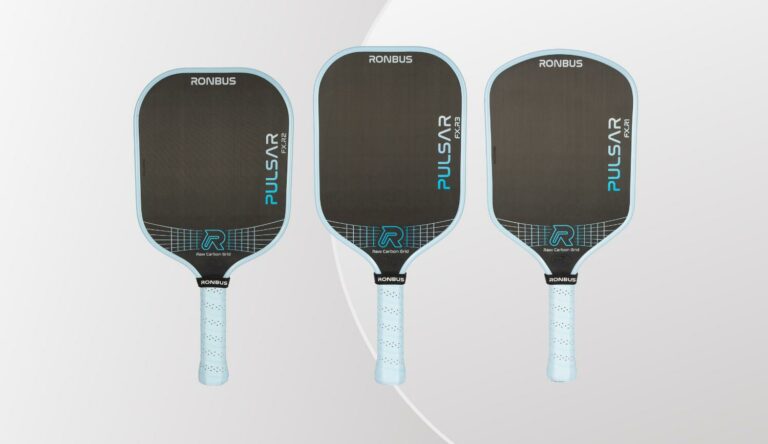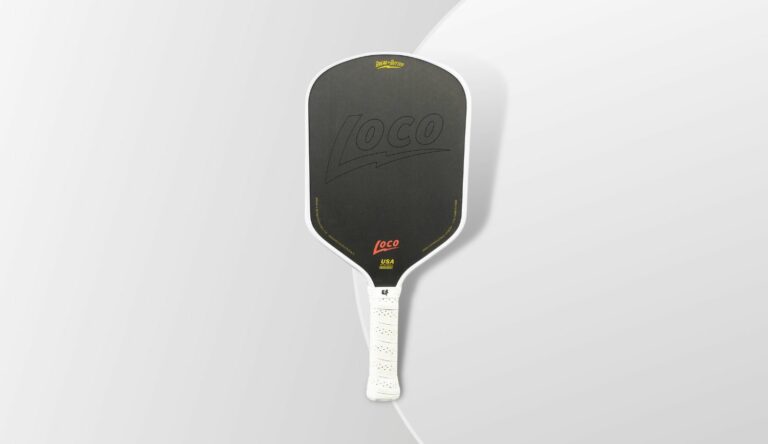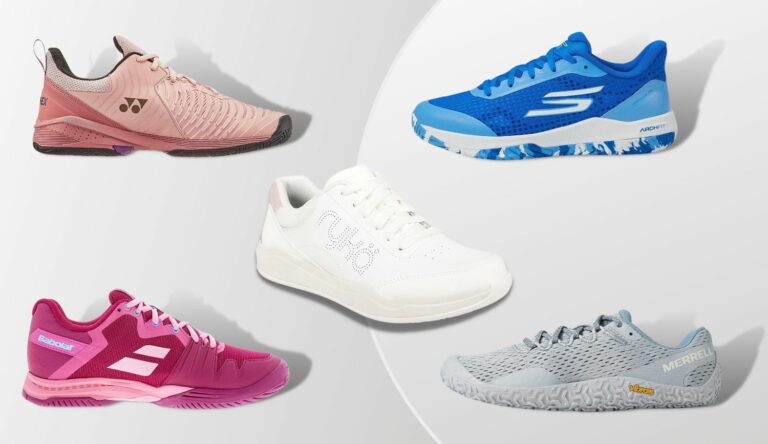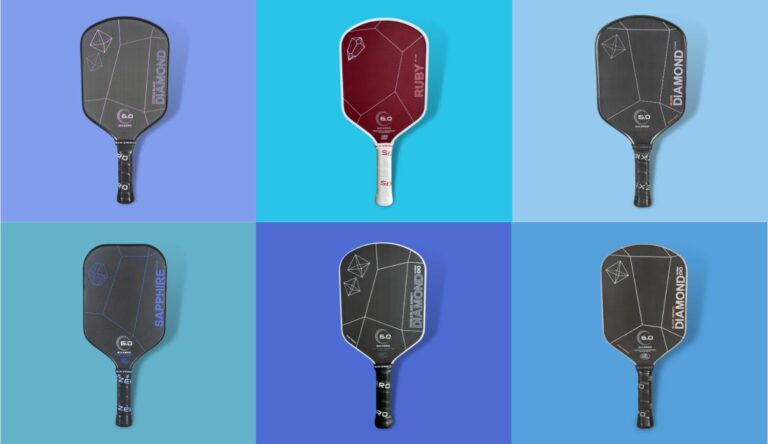In 2023, there’s a boatload of easily-accessible pickleball advice. Due to the meteoric rise in popularity of the sport, there are blogs like this and endless YouTube videos cropping up regularly that can help you become a 5.0+ player.
But there’s plenty of bad pickleball advice out there, too. And there are a lot of people repeating it.
This is the double-edged sword of easily available pickleball tips. People who’ve never read the rules are taking what they read online from untrustworthy sources at face value and spreading it like wildfire.
I know a couple of people that have been on the receiving end of so much incorrect pickleball advice that they decided to hire a certified coach to teach them the ways.
In this post, you’re going to see a number of pickleball myths dispelled. By the end, you’ll be able to hit the court feeling confident that those know-it-all players who are actually dead wrong won’t have sway over you.
This post is part of a tips series that includes:
- Beginner tips
- Intermediate tips
- Advanced tips
- Worst tips (to avoid)
Alright, let’s dive into the list.
Contents
- 1. “The serve is only meant to start the point”
- 2. “You should always be hitting a drop on your 3rd shot
- 3. “Get up to the Kitchen/NVZ line as fast as you can”
- 4. “Stay back at the baseline”
- 5. “You can’t go in the NVZ/Kitchen until the ball bounces”
- 6. “Never retreat from the kitchen/NVZ line”
- 7. “Don’t bother wearing glasses/eye protection”
- 8. “You really shouldn’t hit so hard”
- 9. “Don’t take your foot off the gas! Always play hard and fast”
- 10. “You shouldn’t be hitting lobs!”
- 11. “You play on your side of the court, and I’ll play on mine”
- 12. “Forehand always takes the middle”
- 13. “Don’t be so competitive”
- 14. “The paddle doesn’t make a difference”
- 15. Anything unsolicited
- Conclusion
1. “The serve is only meant to start the point”
Some pickleball players will tell you that the serve’s only purpose is to get the ball into play, and no more. You may even encounter individuals that tell you to make your serve easily returnable for the other team.
Fundamentally, these players undervalue the serve and don’t see it for the important strategic shot that it is. The reality is that the serve sets the tone for every point. It can be a strategic weapon that gives your team an advantage.
Some people may not like this, but they cannot argue that the serve is not an integral part of pickleball. Tough serves that bring in aces are just part of the game.
So feel free to constantly practice and optimize your serve game. It’s not an easy thing to do, so put in the practice. Don’t let someone tell you to stop honing in a new serve technique just because you’re not yet getting it in consistently.
2. “You should always be hitting a drop on your 3rd shot
The third shot is more often than not the most pivotal moment in a pickleball rally. A good third shot can be the difference maker that allows the serving team to get in proper positioning and win the point.
Because of this, there is a lot of emphasis on the shot selection for the third shot in pickleball. The most common third shot is the drop, and there’s a good reason for this. This is because a (good) drop is slow-moving and unattackable. A well-executed drop shot provides the best opportunity for the serving team to get up to the net.
But, just because the 3rd shot drop is an en excellent shot, that doesn’t mean that you should always be hitting it, point after point.
A good third-shot drive is also a very potent shot and can win you more points, especially when your drop game isn’t feeling on point. There’s also the third shot lob, which is a smart shot to mix in here and there. Throwing a variety of shot types at an opponent is always a good strategy to keep them on their toes.
So the next someone tells you to only hit a drop on your third shots, tell them that drives and lobs are good to mix in, too.
3. “Get up to the Kitchen/NVZ line as fast as you can”
There’s a strong emphasis in pickleball to get to the kitchen line quickly to help your team win the point. While it’s true that you want to make your way to the kitchen quickly for strategic positioning, you don’t want to go there too prematurely. There’s a flow of the game that you need to follow before making your way to the line.
You might hear someone say: “as soon as you see the ball going to your partner, run up to the kitchen.”
But that’s bad advice. Instead, you want to pause and observe your partner’s shot. If it’s a “safe” shot (i.e. a drop that’s unattackable by the opponent), then you should move up to the line. If your partner’s shot is a high and long drop or a drive, then stay back and prepare for a slam.
The same is true if you’re the one hitting the third shot. Try to assess as quickly as possible the quality of your shot. If you feel that you’ve hit a good drop or drive, you can make your way to the kitchen line. If you haven’t, stay back and try to get a better shot on your next attempt(s) with the 5th or 7th shot.
Why wait? Because there’s no guarantee that you or yr teammate is going to hit a good ball. Even players at the pro level don’t hit good 3rd shots at times. And if you race up to the kitchen after a bad shot, then you’re either going to face a slam straight at you or get a shot hit right at your feet/past you.
The worst is when people immediately sprint to the kitchen after the serve. I’ve even seen people recommending this, completely ignoring the 2-bounce rule.
4. “Stay back at the baseline”
This terrible advice is much less common than “rush to the kitchen line”, but I’ve still heard it a number of times
The rationale? If you stay back at the baseline, the opponent won’t be able to lob you. You’ll also be able to execute powerful groundstroke drives. Some highly athletic beginners will also embrace this, the idea being that they can rush towards the kitchen if necessary on a short shot.
The reality is that you rarely will be able to make it up in time for a well-placed short shot, especially if it came after a fast drive at your opponent. It’s also just less advantageous all around. Make your way to the kitchen, people!
5. “You can’t go in the NVZ/Kitchen until the ball bounces”
This is a common misconception about the non-volley zone rules. I was told this one multiple times when I started playing pickleball and believed it to be a fact for months.
The reality is that you can go into the kitchen whenever you want (unless you’re currently serving). No, you wouldn’t want to be inside the kitchen that often, but you’re totally allowed to be there.
It also makes a lot of sense to go into the kitchen early when setting up to hit certain dinks. Form and positioning are essential to making a good shot, so feel free to step inside the kitchen while you’re prepping to hit a ball that’s about to bounce.
Visit this post for more information about kitchen rules.
6. “Never retreat from the kitchen/NVZ line”
A lot of the people that tell you to rush to the kitchen line as fast as possible will also tell you to pretend your toes are glued to the NVZ line and never back off of it.
But this is false because there are times that you’ll absolutely want to give ground and back away from the kitchen line.
For example, when a ball is popped up high to your opponent, they’re going to have a great angle on it and are going to be able to smash it down on you. By stepping back, you give yourself more time, more room, and an overall better opportunity to defend the incoming aggressive shot.
7. “Don’t bother wearing glasses/eye protection”
I’m always recommending proper eye protection after seeing a lot of eye injuries, both in person and posted in online forums. An eye surgeon I recently talked with said to me to tell people you like to wear safety glasses. He mentioned seeing a noticeable uptick in pickleball-related eye injuries post-covid with all of the new players entering the sport.
But you will encounter players that say things like: “I’ve been playing for ten years and never seen anyone get hit in the eye!”. Yes, that may be true for them, but all it takes is one time and you can have a damaged retina that needs surgical repair.
There are also players that think eye protection is pointless when you’re not playing against hard-hitting bangers. But a lot of eye injuries happen on errant hits, not just line drives to the face. You can have a ball hit off the corner of your or your partner’s paddle and go straight to your eye before you even know what’s happening.
8. “You really shouldn’t hit so hard”
There are a number of players who aggressively exclaim that pickleball is a gentle game. That you should just hit it nice and easy and not smash high/attackable balls.
This idea that playing softly is the only way to play pickleball is simply not true. While it may have been more acceptable in the past, the reality is that you need both a soft and aggressive game to be competitive in today’s game.
As much as they say that hitting hard at higher levels doesn’t work, reality says otherwise. Pros are driving the ball more and more often because it’s working.
9. “Don’t take your foot off the gas! Always play hard and fast”
While you shouldn’t let anyone convince you to stop driving hard balls, You don’t want to be a one-dimensional “banger”, either.
There are a lot of players that stay stuck in the 3.5-4 rating zone because they refuse to hone their soft game. They just keep banging harder and harder as though playing fast is the only option.
If you want to grow as a player, you need to be well-rounded. Sure, hitting drive after drive on weaker players will win you a lot of games. But when you go against 4.5+ players that know how to block and reset, your lack of soft game and dinking prowess will sink your chances of getting a win.
10. “You shouldn’t be hitting lobs!”
You usually don’t see lobbing too often, but when you do, things can easily turn contentious.
There’s a subset of players that feel strong negative feelings against the lob, and they’re usually unafraid to assert their sentiments on those they play with.
They might say that lobbing doesn’t work or it’s not allowed here. Or perhaps they’ll say that you can/should only lob once a game.
Regardless of their opinion, lobbing is an acceptable shot in pickleball and can be used strategically whenever you want.
With that said, it is bad form to constantly lob against older/mobility-impaired opponents in rec play. But in tournaments, lobs are always fair game. Which is why you should be practicing them.
11. “You play on your side of the court, and I’ll play on mine”
Stay in your lane! Poaching is not allowed! You might hear this said by people who believe that each player covers their half of the court, and nothing more.
But in pickleball, after the serve, the middle line essentially disappears and players can move freely to cover any and all areas of the court.
In fact, there are a number of strategic reasons to cover more than half of the court at times.
So the next time someone says that the pickleball court should be covered 50/50 in doubles, don’t heed their opinion.
12. “Forehand always takes the middle”
Yes, it’s most common for the forehand player to take the middle. This is because forehands are typically easier than backhands, especially for players that haven’t practiced their backhand much.
But it’s not true that the forehand should be taking middle shots in every single matchup. It’s a fluid situation when deciding who takes the shot. While it’s most common for the forehand player to take the shot, here’s no one definite answer for every scenario.
Sometimes the stronger player has a better backhand than the weaker player’s forehand. Think Anna-Leigh Waters, who is incredibly dominant with her backhand. She takes middle shots a lot of the time because of this.
And what about when both players’ forehands are in the middle, due to one being righty and one lefty? You can see that it’s not simply black-and-white.
13. “Don’t be so competitive”
People play pickleball for different reasons. Some players, typically the older crowd, just want to play the game for social reasons and to get in some light exercise. These players prefer a more gentle game that’s focused on fun, not competition.
There’s absolutely validity to this way of playing the game. Millions of pickleball players love to play just for those reasons and don’t care too much at all about winning.
But if someone tells you that you shouldn’t be too aggressive, shouldn’t care so much about winning, or shouldn’t play to win at all, don’t let that sway you. Your competitiveness and desire to win and improve are completely fine.
But you might want to consider who you are playing with and against, and perhaps move your play to a more competitive arena with players that are more like-minded.
14. “The paddle doesn’t make a difference”
There’s a common misconception that it’s the player, not the paddle. While there’s absolutely a large grain of truth to this, it’s not entirely on the mark.
Yes, a good player can perform quite well with a cheap, mediocre paddle. And a bad player can perform awfully with an amazing paddle.
But it’s also true that a good player can get an even better competitive edge with a great paddle, and a new player can perform better and improve much faster with a great paddle.
15. Anything unsolicited
Our last one isn’t a particularly bad tip, but simply bad form.
It doesn’t matter if you have great advice to give, if you say it without being asked, it’s likely to not be received well. This is especially true if it’s said in a condescending or exasperated way.
Unsolicited advice is unfortunately very common in pickleball. It’s especially horrendous to see when the advice isn’t even good!
Hopefully, these people wise up to the errors of their ways and learn to wait for better opportunities to coach up other players.
Conclusion
There you have it, a bunch of crappy pickleball advice that you should know to avoid because you will encounter it.
There are other silly items I didn’t add to the list, like people saying “Don’t bother with spin” or “Don’t hit backhands with two hands”
But the list had to end at some point.
What are your thoughts about this list? Have you at one point given or been on the receiving end of advice like this? Have more to add? Let us know in the comments below.






